Demographic Marketing and Business Models
Feb 12, 2024
By Ari Manor , CEO at ZOOZ

This is one in a series of articles that provide detailed and updated information about Marketing.In this specific article, which focuses on Demographic Marketing and Business Models, you can read about:
- Marketing to Baby Boomers (1946-1964)
- Marketing to Generation X (1965-1980)
- Marketing to Millennials (1981-1996)
- Marketing to Generation Z (1997-2012)
- Marketing to Generation Alpha (2013-2025)
- Marketing to Seniors
- Marketing to Teens (Teenagers)
- Marketing to Physicians
- Marketing to College Students
- Marketing to The Affluent
- Marketing to Parents
- B2C Marketing
- B2B Marketing
- B2B2C Marketing
- B2G Marketing
- D2C Marketing
- C2B Marketing
For additional articles about Marketing, see the Topic Menu.

Marketing to Baby Boomers (1946-1964)
Marketing to Baby Boomers, individuals born between 1946 and 1964, requires understanding their unique preferences, values, and media consumption habits. As a demographic with significant spending power, Baby Boomers are an important market segment for many businesses.
Here's how to effectively market to Baby Boomers:
- Emphasize Value and Quality: Baby Boomers prioritize value, quality, and customer service in their purchasing decisions. Highlight these aspects in your marketing messages to appeal to their preferences.
- Utilize Traditional Media: While many Baby Boomers are online, traditional media channels like television, radio, and print still play a significant role in reaching this audience effectively.
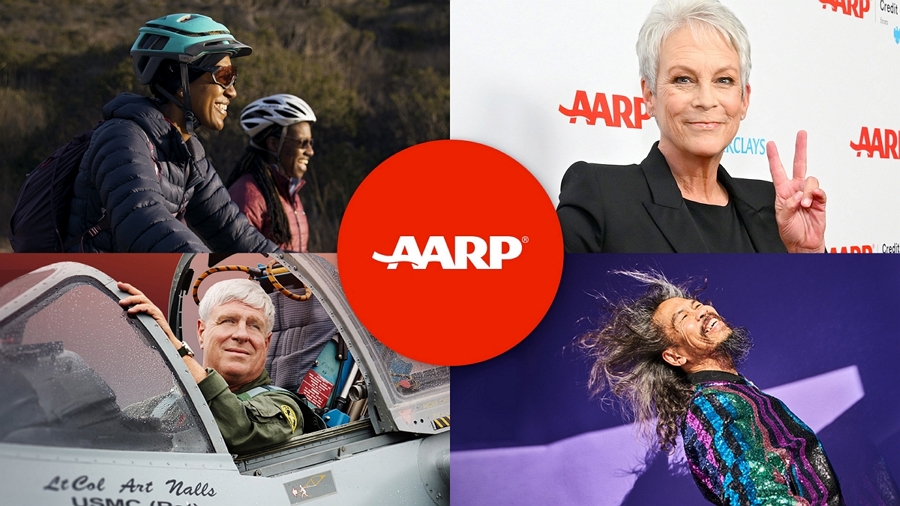 Case Study: AARP's Multi-Channel Engagement
Case Study: AARP's Multi-Channel Engagement- Company: AARP, USA (ongoing)
- What Was Done: AARP developed a multi-channel marketing strategy to engage Baby Boomers, incorporating traditional media like magazines and TV, along with digital platforms such as social media and email newsletters. Their content focused on topics relevant to the Baby Boomer generation, including health, retirement planning, and lifestyle.
- Results/Impact: AARP's approach has led to a sustained increase in membership, with over 38 million members as of 2021. Their ability to effectively communicate across different channels has kept AARP relevant and engaging for the Baby Boomer generation.
- Focus on Clear, Respectful Messaging: Use straightforward and respectful language that resonates with Baby Boomers. Avoid slang or overly casual tones that may not align with their communication preferences.
- Showcase Reliability and Trustworthiness: Build trust by showcasing your brand's reliability, history, and testimonials from satisfied customers within the same age group.
- Highlight Health and Wellness: Many Baby Boomers are focused on health, wellness, and active living. Tailor your products and marketing messages to reflect these interests where applicable.
 Case Study: SilverSneakers Fitness Program
Case Study: SilverSneakers Fitness Program- Company: Organization: SilverSneakers, USA (ongoing)
- What Was Done: SilverSneakers targeted Baby Boomers with a fitness program available through Medicare Advantage plans. Marketing efforts focused on the benefits of staying active in older age, utilizing direct mail, partnerships with health plans, and community events to reach their audience.
- Results/Impact: The program has been immensely successful, with over 15 million Americans eligible for SilverSneakers through their Medicare plans. The targeted marketing strategy effectively engaged Baby Boomers, significantly impacting their health and wellness.
- Promote Convenience and Accessibility: Make sure your products and services are easily accessible, including user-friendly website navigation and customer service support that caters to non-tech-savvy individuals.
- Engage Through Email Marketing: Email is a highly effective channel for reaching Baby Boomers, who appreciate detailed information and personalized communication.
- Offer Financial Security Information: Financial planning, retirement savings, and investment products should emphasize security and long-term benefits, appealing to Boomers' desire for financial stability.
- Community and Social Engagement: Highlight your brand's community involvement and social engagement, as Baby Boomers value companies with a sense of social responsibility.
- Use Influencers and Spokespeople They Trust: Partner with influencers or spokespeople who resonate with the Baby Boomer demographic, such as respected figures in their age group or industry.
- Highlight Multi-Generational Appeal: Market products and services that cater to not just Boomers but also their families, emphasizing the multi-generational appeal of your offerings.
- Personalized Experiences: Offer personalized services or customization options, as Baby Boomers appreciate products and experiences tailored to their specific needs and preferences.
Marketing to Baby Boomers involves recognizing their distinct characteristics and tailoring your approach to meet their expectations. By focusing on quality, value, and trust, and leveraging both traditional and digital marketing channels appropriately, businesses can effectively engage with this influential demographic.

Marketing to Generation X (1965-1980)
Marketing to Generation X, those born between 1965 and 1980, involves understanding the unique characteristics and preferences of this often-overlooked generation. Gen Xers are known for their pragmatism, brand loyalty, and balance of traditional and digital media consumption. With substantial spending power, they represent a valuable demographic for marketers.
Here's how to effectively reach and engage Gen X:
- Blend Digital and Traditional Marketing: Gen X comfortably navigates both digital and traditional media. Employ a mix of online platforms (like email and social media) and traditional channels (such as print and broadcast media) to capture their attention.
- Focus on Value and Quality: Highlight the value, quality, and reliability of your products or services. Gen X appreciates practicality and is likely to invest in brands that offer long-term benefits.
- Emphasize Family and Work-Life Balance: Many Gen Xers are balancing career and family responsibilities. Marketing messages that resonate with these priorities, including time-saving solutions and products that enhance family life, can be particularly effective.
 Case Study: Home Depot's DIY Workshops
Case Study: Home Depot's DIY Workshops- Company: Home Depot, USA (ongoing)
- What Was Done: Home Depot launched in-store and online DIY workshops targeting Generation X, who are often homeowners interested in home improvement projects. The workshops covered a range of topics from basic home repairs to more advanced DIY projects, using a mix of live events, online tutorials, and social media to engage the audience.
- Results/Impact: The DIY workshops have been a hit, leading to increased in-store visits and online engagement. Home Depot reported a noticeable uptick in sales of DIY tools and materials, crediting the workshops with helping to cement its position as a go-to resource for home improvement.
- Showcase Authenticity and Transparency: Gen X values honesty and authenticity. Be transparent about your business practices and offer genuine, straightforward marketing messages.
- Utilize Email Marketing: Email is a highly effective channel for reaching Gen X, who prefers detailed information and direct communication. Tailor your emails with relevant content that speaks to their interests and needs.
- Highlight Financial Security: Financial planning, retirement savings, and investment products should emphasize security and stability, appealing to Gen X's desire for financial well-being.
- Offer Loyalty Programs: Loyalty and rewards programs can be effective in retaining Gen X customers, who show brand loyalty but appreciate recognition and rewards for their continued business.
- Engage Through Nostalgia Marketing: Tap into nostalgia with references to pop culture from the '80s and '90s. This can evoke positive emotions and strengthen your brand's connection with Gen X.
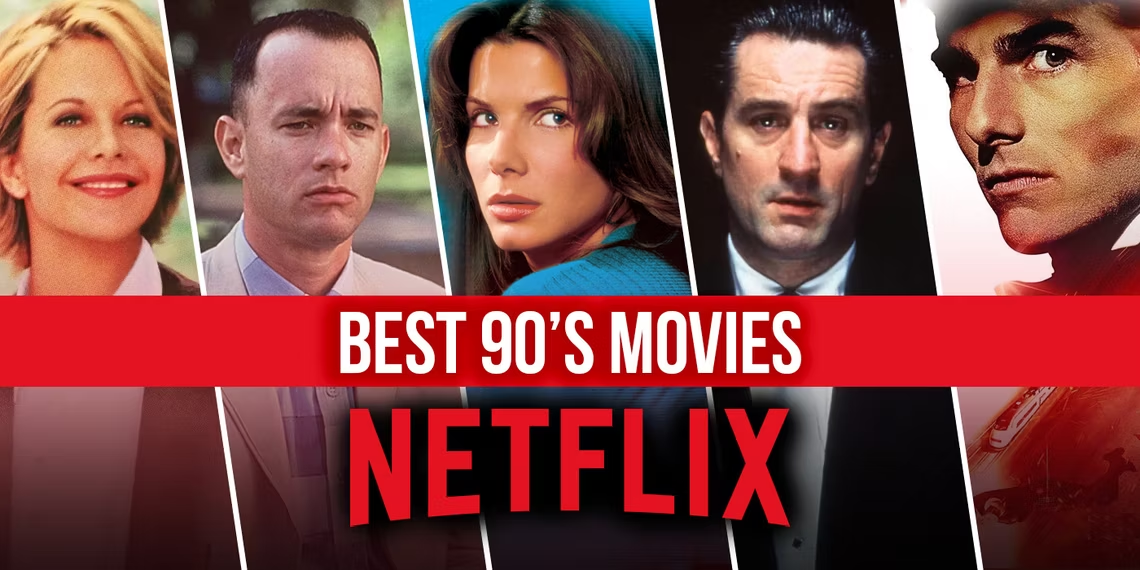 Case Study: Netflix's Nostalgic Content
Case Study: Netflix's Nostalgic Content- Company: Netflix, Worldwide (ongoing)
- What Was Done: Netflix strategically acquired and produced content that appealed to Generation X's nostalgia, such as reboots of popular shows and movies from the 80s and 90s. This content strategy was marketed through targeted emails and social media campaigns that highlighted the nostalgic value of these offerings.
- Results/Impact: This approach contributed to Netflix's growth, with an increase in subscriptions among Generation X viewers. The focus on nostalgic content successfully tapped into the desires of Gen Xers, resulting in higher engagement and viewing hours.
- Promote Work-Life Balance Products and Services: Products and services that promote efficiency, convenience, and a better work-life balance resonate well with this demographic.
- Leverage Influencer Marketing Wisely: Partner with influencers who share genuine experiences and reviews, as Gen X tends to be skeptical of overt advertising and values authenticity.
- Support Causes and Social Responsibility: Demonstrate your brand's commitment to social responsibility. Gen X supports businesses that contribute positively to society.
- Personalization and Customization: Offer personalized products or services. Gen X appreciates when brands recognize their individual preferences and needs.
By understanding Generation X's unique traits and preferences, marketers can tailor their strategies to engage this demographic more effectively. Combining digital savvy with a respect for traditional values and a focus on quality, authenticity, and practicality will resonate with Gen X consumers.

Marketing to Millennials (1981-1996)
Marketing to Millennials, born between 1981 and 1996, necessitates an approach that aligns with their digital fluency, value-driven purchasing decisions, and a preference for engaging, meaningful brand interactions. Millennials prioritize authenticity, social responsibility, and personalized experiences, making them a distinct demographic for marketers to engage.
Here's a strategic framework for effectively reaching and resonating with Millennials:
- Digital and Social Media Focus: Embrace digital platforms wholeheartedly. Use social media, email, and online advertising to communicate, as Millennials are highly active online and respond well to digital-first strategies.
- Authenticity and Transparency: Prioritize genuine brand messaging. Millennials gravitate towards brands that are honest about their products and practices and that communicate authentically.
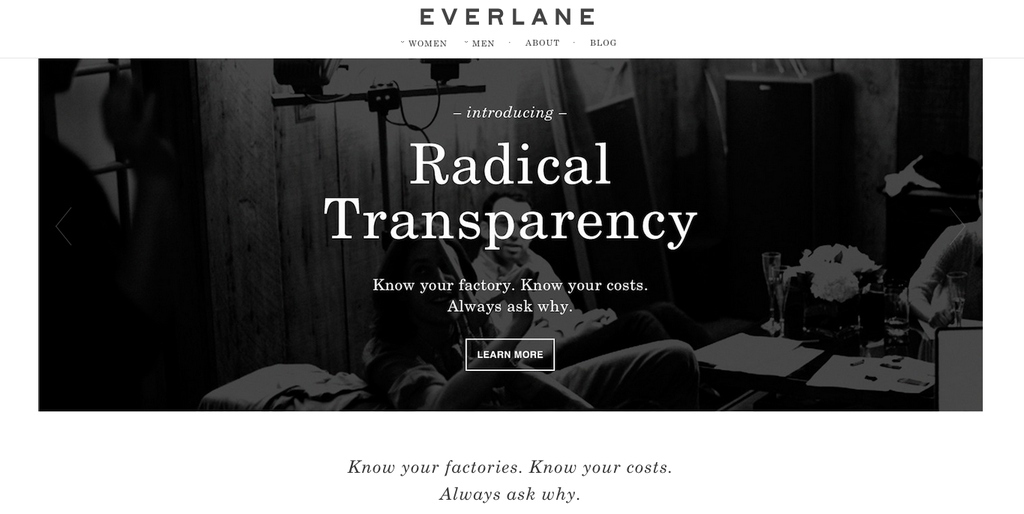 Case Study: Everlane's Transparent Pricing
Case Study: Everlane's Transparent Pricing- Company: Everlane, USA (ongoing)
- What Was Done: Everlane appealed to Millennials' preference for brand transparency and ethical consumerism by marketing its apparel with a transparent pricing model. The company disclosed the costs of materials, labor, and transportation for each product, coupled with information about the factories where items were made. This approach was promoted through social media, emphasizing the brand's commitment to ethics and transparency.
- Results/Impact: Everlane's transparency led to a loyal Millennial customer base, with the brand seeing consistent growth year over year. The approach resonated with Millennials' values, demonstrating the importance of aligning marketing strategies with the social and ethical priorities of the target demographic.
- Experience Over Product: Market the experience or lifestyle your brand facilitates rather than just the product or service. Millennials often value what a product does for them or symbolizes the product itself.
- Engagement with Social Causes: Demonstrate a commitment to social and environmental issues. Brands that align with Millennials' values and contribute to positive change can foster deeper connections.
- Leverage User-Generated Content: Encourage and share content created by customers, such as reviews or photos on social media. This not only acts as social proof but also builds a community around your brand.
- Personalized Communications: Tailor marketing messages and offers. Personalization, driven by data and insights, can significantly enhance engagement and conversion rates among Millennials.
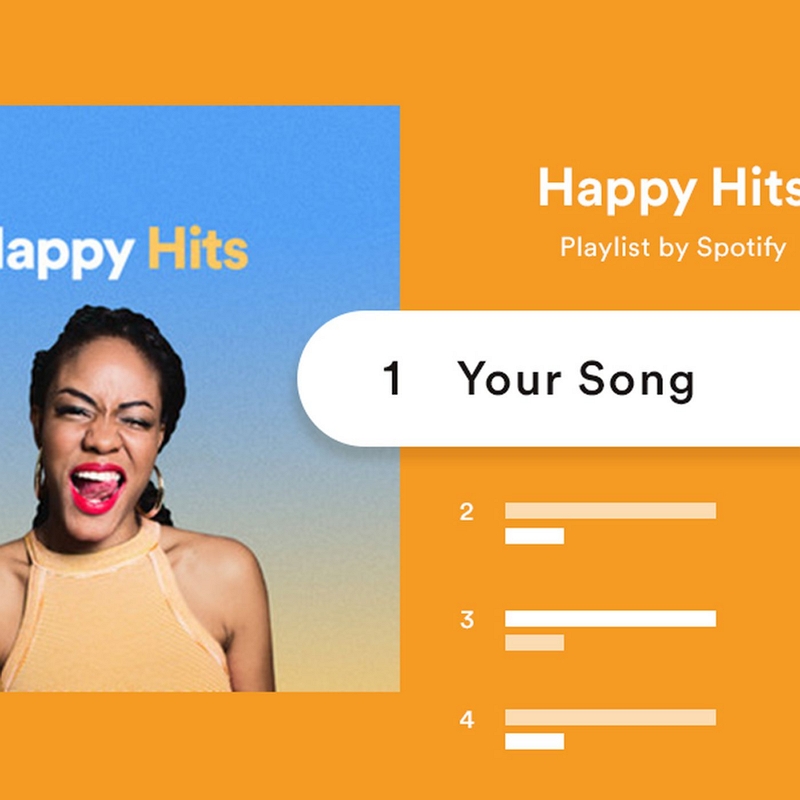 Case Study: Spotify's Personalized Playlists
Case Study: Spotify's Personalized Playlists- Company: Spotify, Worldwide (ongoing)
- What Was Done: Spotify tapped into the Millennial market by emphasizing personalization and discovery in its marketing efforts. It created features like "Discover Weekly" and "Year in Review" that resonated with Millennials' desire for personalized experiences and nostalgia. These features were promoted through targeted social media campaigns and in-app notifications.
- Results/Impact: Spotify's personalized playlists became a hallmark of the user experience, leading to a significant increase in user engagement and premium subscriptions among Millennials. The "Discover Weekly" feature alone resulted in a noticeable uptick in user retention, highlighting the effectiveness of personalized marketing strategies for this demographic.
- Influencer Partnerships: Collaborate with influencers who resonate with your target demographic. Authentic partnerships with influencers can effectively amplify your brand’s reach and credibility.
- Convenience and Efficiency: Streamline the purchasing process with user-friendly websites and mobile apps. Convenience in browsing, decision-making, and purchasing is highly valued.
- Content Marketing: Offer valuable, informative, and entertaining content. Blogs, videos, podcasts, and infographics that provide utility or entertainment can attract and retain Millennial attention.
- Innovative Loyalty Programs: Develop loyalty programs that offer meaningful rewards, experiences, or recognition, moving beyond traditional points systems to foster genuine loyalty.
- Sustainability Practices: Highlight sustainability initiatives and eco-friendly products. Millennials are inclined to support brands that are environmentally conscious and that act responsibly.
- Interactive Campaigns: Create marketing campaigns that invite participation, such as interactive online experiences, contests, and social media challenges, to engage Millennials in a dynamic way.
- Optimize for Mobile: Ensure all online content and shopping experiences are optimized for mobile devices, recognizing that Millennials frequently use smartphones for internet access and shopping.
Effective marketing to Millennials requires a blend of technological savvy, ethical business practices, and a commitment to creating genuine, value-added experiences. By understanding and addressing their unique preferences and values, brands can build meaningful relationships with Millennial consumers.

Marketing to Generation Z (1997-2012)
Marketing to Generation Z, those born between 1997 and 2012, involves understanding their unique characteristics and preferences. This digitally native generation values authenticity, inclusivity, and social responsibility, and they wield considerable influence over family purchasing decisions and trends.
Here’s how to effectively connect with and market to Gen Z:
- Embrace Digital Platforms Fully: Gen Z spends a significant amount of time on social media platforms like TikTok, Instagram, and Snapchat. Utilize these channels for marketing, focusing on short, engaging content that resonates with their preferences.
 Case Study: Glossier's Social-Media-First Approach
Case Study: Glossier's Social-Media-First Approach- Company: Glossier, USA (ongoing)
- What Was Done: Glossier successfully targeted Generation Z by developing a brand that is deeply integrated with social media. The company leveraged platforms like Instagram and YouTube for marketing, utilizing user-generated content, influencer partnerships, and community engagement to build brand loyalty. Their approach emphasized authenticity, inclusivity, and direct communication with consumers.
- Results/Impact: This strategy led to rapid growth among Gen Z consumers, with Glossier becoming a cult favorite and achieving exponential sales growth. The brand's success underscores the importance of authenticity and community-driven marketing strategies to engage with Generation Z.
- Authenticity and Transparency: Gen Z values authentic engagement and transparency from brands. Showcase real stories, behind-the-scenes content, and honest messaging to build trust.
- Inclusivity and Diversity: Reflect diversity and inclusivity in your marketing campaigns. Gen Z is a diverse generation that expects to see this diversity reflected in the marketing materials they encounter.
- Leverage Video Content: Video is a preferred format for Gen Z. Utilize platforms like YouTube and TikTok to share engaging and informative video content that captures their attention.
 Case Study: Duolingo's TikTok Engagement
Case Study: Duolingo's TikTok Engagement- Company: Duolingo, Worldwide (2021)
- What Was Done: Duolingo embraced TikTok to connect with Generation Z by creating humorous and relatable content that showcased the language learning app's features and benefits. Their TikTok account featured the company's mascot in various comedic scenarios, capitalizing on trending topics and challenges to engage with younger audiences.
- Results/Impact: Duolingo's TikTok strategy significantly increased app downloads and engagement among Gen Z users, with the brand gaining over 2 million followers on the platform within a year. Their success on TikTok demonstrates the power of leveraging popular social media platforms and viral content to connect with Gen Z consumers.
- Engage with Social and Environmental Issues: Highlight your brand’s commitment to social causes and environmental sustainability. Gen Z is more likely to support brands that align with their values and contribute to making a positive impact.
- Encourage User-Generated Content: Foster a sense of community and engagement by encouraging Gen Z customers to create and share content related to your brand. This builds authenticity and peer influence.
- Mobile-First Approach: Ensure all digital content is optimized for mobile devices. Gen Z primarily uses smartphones for internet access, shopping, and entertainment.
- Interactive and Immersive Experiences: Incorporate interactive elements such as polls, quizzes, and augmented reality (AR) experiences into your marketing to engage Gen Z in innovative ways.
- Personalization and Customization: Offer personalized experiences and products. Gen Z values individuality and seeks customization options that allow them to express their unique identity.
- Fast and Efficient Customer Service: Provide quick, efficient customer service across multiple channels, including social media. Gen Z expects rapid responses and resolutions.
- Influencer Collaborations: Partner with influencers who genuinely resonate with Gen Z. Authentic influencer partnerships can effectively reach and engage this audience.
- Focus on Experiences: Market experiences rather than just products. Gen Z values experiences that can be shared and remembered over material possessions.
- Use of Memes and Humor: Incorporate humor, memes, and a casual tone in your marketing where appropriate. Relatable and entertaining content can help in capturing Gen Z’s attention.
Marketing to Generation Z requires a dynamic, flexible approach that prioritizes digital engagement, authentic communication, and alignment with their values and expectations. By adopting these strategies, brands can effectively reach and resonate with this influential and discerning demographic.

Marketing to Generation Alpha (2013-2025)
Marketing to Generation Alpha, the cohort born from 2013 to 2025, represents a forward-looking challenge for marketers. As the first generation wholly born into the 21st century, their lives are intricately intertwined with technology from an early age. Although still young, their influence on family purchasing decisions and future trends is growing. Strategies to engage this demographic need to anticipate future digital trends and understand the preferences of their millennial parents, who act as their current gatekeepers.
Here's a strategic approach:
- Focus on Digital and Interactive Content: Embrace the latest digital platforms and interactive content formats. Generation Alpha is highly comfortable with technology, engaging with tablets, smartphones, and voice-activated devices from an early age.
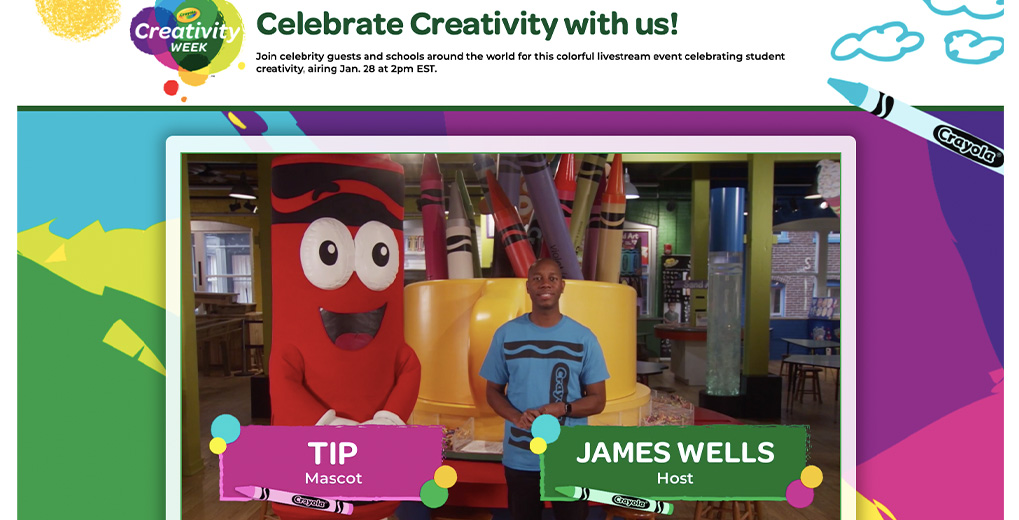 Case Study: Crayola's Creativity Hub Online Platform
Case Study: Crayola's Creativity Hub Online Platform- Company: Crayola, USA (2020)
- What Was Done: Crayola launched an online platform called "Crayola Creativity Hub," targeting Generation Alpha children and their parents. The hub offers free access to educational content, DIY craft projects, and interactive coloring pages. It was promoted through parent-focused social media campaigns and partnerships with educators.
- Results/Impact: The Creativity Hub significantly increased Crayola's online engagement, with a 40% rise in website traffic and a notable increase in social media interactions from parents and educators. The platform successfully reinforced Crayola's brand as a leader in creative educational resources, highlighting the effectiveness of digital content marketing to both children and their decision-making parents.
- Parental Involvement: Marketing efforts should also appeal to millennial parents, emphasizing values such as education, health, sustainability, and inclusivity.
- Educational Content: Provide value through educational and developmentally beneficial content. Apps, games, and videos that combine learning with fun can appeal to both Generation Alpha and their parents.
- Inclusivity and Diversity: Reflect a wide range of cultures, family structures, and experiences in your marketing to resonate with the diverse and inclusive outlook of both Generation Alpha and their parents.
- Augmented Reality (AR) and Gamification: Utilize AR and gamification to create engaging, immersive experiences. These technologies can make interactions with your brand memorable and enjoyable.
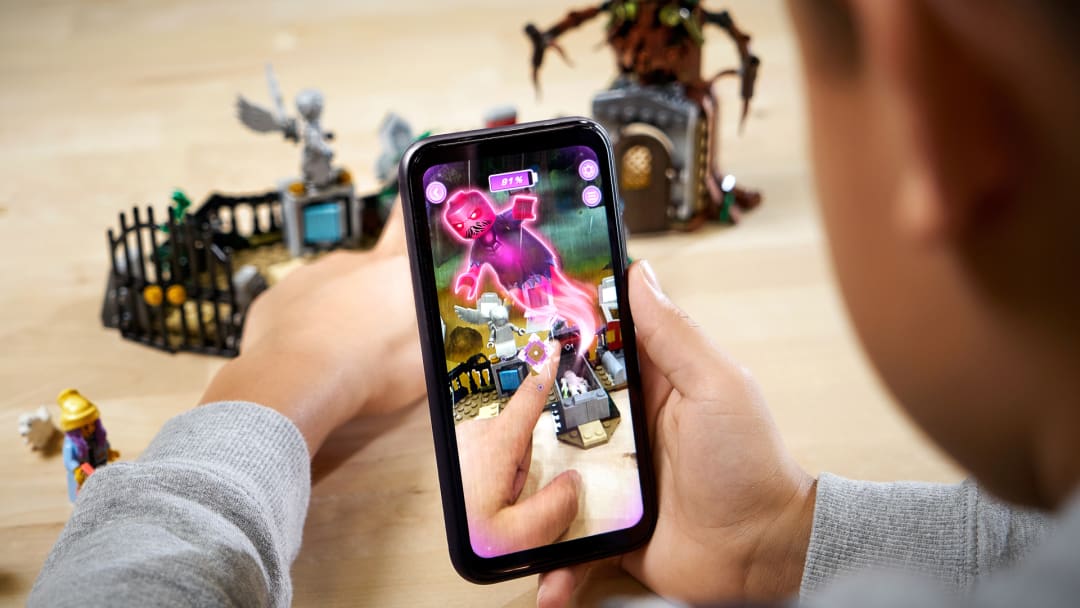 Case Study: LEGO's Interactive Play Experiences
Case Study: LEGO's Interactive Play Experiences- Company: LEGO, Worldwide (ongoing)
- What Was Done: LEGO has innovatively marketed to Generation Alpha by integrating digital technology with traditional play. They launched interactive experiences such as augmented reality (AR) apps that bring LEGO sets to life and coding kits that teach basic programming skills, promoting these initiatives through online platforms, family-oriented social media content, and educational partnerships.
- Results/Impact: These digital enhancements to LEGO's product line have not only maintained the brand's relevance but have also attracted a new generation of young builders. The introduction of AR and coding kits led to a 5% increase in global sales, demonstrating the importance of evolving product offerings and marketing strategies to meet the interests and expectations of younger generations.
- Sustainability: Emphasize eco-friendly practices and products. Environmental consciousness is important to their millennial parents and will likely be a significant value for Alpha as they grow.
- Safety and Privacy: Ensure all digital platforms and products are safe and secure, protecting children's privacy and data. Trust is paramount for parents when choosing products or services for their children.
- Brand Loyalty Programs for Families: Create loyalty programs that offer benefits for the whole family. Rewards that provide family experiences or savings on future purchases can be particularly appealing.
- Influencer and Peer Recommendations: While still emerging, kid influencers on platforms like YouTube can have significant sway. Partner with family-friendly influencers that share genuine experiences with your products.
- Visual and Voice Search Optimization: As Generation Alpha uses voice-activated assistants for searches and commands, optimizing for voice and visual search becomes increasingly important.
- Customization and Personalization: Offer customizable product options or personalized experiences. This generation values individuality and having products that reflect their personal interests and identities.
- Storytelling: Use storytelling to create emotional connections, with narratives that are imaginative and engaging, to capture the attention of both Generation Alpha and their parents.
Marketing to Generation Alpha requires a blend of innovation, digital savviness, and an understanding of the values important to their parents. By focusing on these areas, brands can create meaningful connections that resonate with the youngest generation and their families.

Marketing to Seniors
Marketing to seniors, a demographic typically encompassing individuals aged sixty-five and older, requires a nuanced understanding of their preferences, habits, and values. This demographic values trust, clarity, and relevance in communications and often has significant spending power. Effective marketing strategies should respect their experience while providing clear benefits.
Here’s an approach to successfully engage and market to seniors:
- Clear and Direct Messaging: Use straightforward, jargon-free language in your marketing materials. Seniors appreciate clarity and directness, which helps in making informed decisions.
- Focus on Benefits: Highlight the practical benefits and features of your products or services that are most relevant to the senior demographic, such as ease of use, safety features, and ways they enhance quality of life.
- Utilize Traditional Media: While many seniors are increasingly tech-savvy, traditional media channels like print, television, and radio remain effective for reaching this audience.
- Personalization and Respect: Personalize communications and show respect for their experience and knowledge. Avoid any implication that seniors are not capable or knowledgeable about modern technologies or trends.
- Emphasize Customer Service: Provide exceptional customer service with multiple easy-to-access channels for inquiries and support. Seniors value high-quality service and the ability to interact with real people.
- Community Engagement: Engage with seniors in community centers, events, and through sponsorships of local activities. Face-to-face engagement can build trust and familiarity.
- Digital Presence: Optimize your digital platforms for accessibility, including easy navigation and readability. Include content that is relevant and engaging for seniors who are online.
- Health and Wellness: Products and services related to health, wellness, and active living are particularly appealing. Marketing should emphasize how your offerings can contribute to a healthy and independent lifestyle.
- Security and Privacy: Highlight the security and privacy features of your products or services. Seniors are often concerned about fraud and privacy, so addressing these concerns can differentiate your brand.
- Testimonials and Reviews: Use testimonials and reviews from senior customers to provide social proof and build credibility. Real stories and experiences resonate well with this demographic.
- Simplicity in Design: Whether it’s product design or marketing materials, simplicity and ease of use are key. Avoid overwhelming seniors with too many choices or complex interfaces.
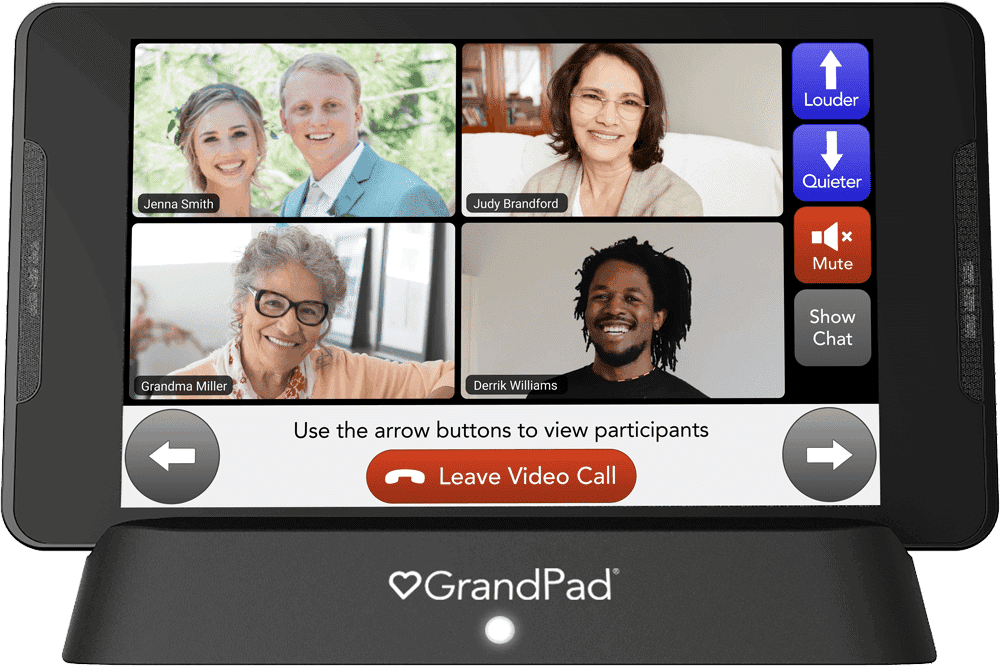 Case Study: GrandPad's Simplified Tablet
Case Study: GrandPad's Simplified Tablet- Company: GrandPad, USA (2019)
- What Was Done: GrandPad introduced a simplified tablet designed for seniors not comfortable with traditional technology. The device features easy-to-use apps for video calling, photo sharing, and games. Marketing strategies included online ads targeting caregivers and seniors, direct mail catalogs, and demonstrations at senior living communities.
- Results/Impact: The GrandPad tablet saw a 50% increase in sales year over year, with high user satisfaction rates among seniors. The product and its marketing have successfully addressed a gap in the tech market, proving the importance of understanding and catering to the specific needs of senior consumers.
- Value and Affordability: Emphasize value, affordability, and any senior discounts or loyalty programs. Financial security is important to seniors, and they look for products and services that offer good value for money.
- Educational Content: Provide educational content that helps seniors stay informed about their interests, health, technology, and other relevant topics. Workshops or seminars can also be effective.
Marketing to seniors effectively involves understanding and respecting their unique needs and preferences. By adopting a thoughtful, respectful approach and emphasizing clarity, relevance, and service, businesses can successfully engage with this important and diverse demographic.

Marketing to Teens (Teenagers)
Marketing to teens, a dynamic and influential demographic, requires staying attuned to their trends, preferences, and digital savviness. Teens today are highly connected, value authenticity, and are drawn to brands that stand for something beyond their products.
Here’s a strategic approach for effectively engaging and marketing to teens:
- Leverage Social Media Platforms: Utilize platforms popular among teens, such as TikTok, Instagram, and Snapchat, for marketing campaigns. Content should be creative, engaging, and shareable to capture their attention.
- Authenticity and Transparency: Be genuine in your messaging and branding. Teens value authenticity and can be skeptical of overt marketing. Showcase real stories and people in your campaigns.
- Influencer Collaborations: Partner with influencers who resonate with the teen demographic. Authentic endorsements from influencers can significantly impact teens' perceptions and buying decisions.
- Interactive and Engaging Content: Create content that invites participation, such as contests, polls, and challenges. Interactive content can boost engagement and foster a sense of community.
- Visual and Video Content: Prioritize visual storytelling and video content, which are highly effective with this demographic. Short-form videos, in particular, are popular and can convey your message quickly.
- Stand for a Cause: Many teens are socially and environmentally conscious. Highlight your brand's commitment to social causes, sustainability, and ethical practices to align with their values.
- Mobile Optimization: Ensure all digital content is optimized for mobile devices. Teens predominantly use smartphones for internet access and social media.
- Trend Responsiveness: Stay up-to-date with trends and pop culture that matter to teens. Incorporating these elements into your marketing can make your brand more relatable.
- Personalization: Use data analytics to personalize marketing efforts. Tailored recommendations and content can make teens feel understood and valued by your brand.
- Peer Reviews and Social Proof: Encourage and highlight reviews and testimonials from other teens. Peer opinions are highly influential in their purchasing decisions.
- Entertainment Value: Ensure your marketing campaigns are not only informative but also entertaining. Teens are more likely to engage with content that entertains them.
- Privacy and Security: Be mindful of privacy concerns and ensure your marketing practices comply with laws protecting minors online.
- Direct Communication: Utilize chat and instant messaging for customer service. Teens appreciate direct and quick communication channels for inquiries and support.
- Experiential Marketing: Create experiences, not just ads. Events, pop-up shops, and interactive online experiences can leave a lasting impression and build brand loyalty.
 Case Study: Vans' Youth Culture Integration
Case Study: Vans' Youth Culture Integration
- Company: Vans, Worldwide (ongoing)
- What Was Done: Vans deeply integrated its brand into youth culture by sponsoring and marketing through skateboarding events, music festivals, and art competitions. They embraced social media platforms popular with teenagers, like Instagram and TikTok, to showcase their involvement in these cultural pillars, alongside engaging with influencers who resonate with their target demographic.
- Results/Impact: This approach solidified Vans' position as a staple brand among teenagers, leading to a consistent increase in brand loyalty and sales within this age group. By 2020, Vans reported a significant growth in its youth customer base, attributing this success to its authentic engagement with teen interests and culture.
Marketing to teens involves a blend of digital innovation, authenticity, and social consciousness. By understanding their unique preferences and leveraging the right channels and messages, brands can effectively engage with this important demographic, building long-term relationships and brand affinity.

Marketing to Physicians
Marketing to physicians requires a nuanced approach that respects their time constraints, need for evidence-based information, and the regulatory environment of the healthcare industry. Effective strategies should focus on demonstrating the value and credibility of your products or services, facilitating their ability to deliver superior patient care.
Here’s how to approach marketing to physicians effectively:
- Educational Content: Provide high-quality, informative content that supports physicians in staying abreast of medical advancements, treatment options, and industry trends. Peer-reviewed articles, case studies, and continuing medical education (CME) opportunities are highly valued.
 Case Study: Medtronic's Continuous Education Programs
Case Study: Medtronic's Continuous Education Programs- Company: Medtronic, Worldwide (ongoing)
- What Was Done: Medtronic developed continuous education programs for physicians, focusing on the latest advancements in medical devices and treatments. These programs were marketed through medical journals, online webinars, and at medical conferences, providing valuable information and training that physicians could use in their practices.
- Results/Impact: The education programs enhanced Medtronic's reputation among medical professionals, leading to increased brand loyalty and preference for Medtronic products. Feedback from participating physicians indicated high satisfaction with the quality and relevance of the content, contributing to a stronger partnership between the company and healthcare providers.
- Evidence-Based Marketing: Physicians respond to evidence-based data. Ensure that your marketing materials include clinical research, studies, and trials that demonstrate the efficacy and safety of your products or services.
- Professional Networking and Conferences: Engage with physicians at medical conferences, seminars, and through professional networks. These venues offer opportunities for face-to-face interaction and detailed discussions about your offerings.
- Digital Platforms and Email: Utilize targeted email campaigns and professional platforms like LinkedIn or specialized medical forums to share information and updates. Websites dedicated to healthcare professionals can also be effective channels.
 Case Study: Doximity's Digital Networking Platform
Case Study: Doximity's Digital Networking Platform- Company: Doximity, USA (2015)
- What Was Done: Doximity launched a digital platform designed to connect physicians for networking, collaboration, and sharing of the latest medical research and news. The platform was marketed directly to physicians through online ads, email campaigns, and partnerships with medical associations.
- Results/Impact: Doximity quickly became a leading professional network for physicians in the United States, with over 70% of doctors joining the platform. Its success demonstrated the effectiveness of digital marketing strategies targeted at professional demographics and the importance of providing value through content and collaboration opportunities.
- Peer Recommendations: Leverage testimonials and endorsements from respected physicians and thought leaders in the medical community. Peer recommendations carry significant weight in a physician’s decision-making process.
- Customized Solutions: Highlight how your products or services can be tailored to meet the specific needs of a physician’s practice or specialty. Personalization demonstrates an understanding of their unique challenges and requirements.
- Regulatory Compliance: Ensure that all marketing efforts comply with healthcare regulations and ethical standards. Transparency and adherence to guidelines are crucial in building trust.
- Convenience and Accessibility: Offer solutions that are easy to implement and use within a busy medical practice. Highlight any features that save time or streamline patient care processes.
- Value Beyond the Product: Emphasize the additional support and services your company offers, such as patient education materials, technical support, or practice management tools.
- Engaging Visuals and Demonstrations: Use videos, infographics, and live demonstrations to showcase your products or services. Visual aids can help explain complex information more effectively.
- Responsive Customer Service: Provide exceptional customer service with representatives knowledgeable about medical practices and the healthcare industry. Quick and efficient resolution of inquiries or issues is essential.
- Follow-up and Ongoing Support: Maintain ongoing communication with physicians who have shown interest in or are using your products. Regular updates, support, and check-ins can foster long-term relationships.
Marketing to physicians demands a focus on education, evidence, and utility. By presenting your products or services in a way that aligns with their professional needs and contributes to patient care, you can successfully engage this critical audience and build lasting partnerships.

Marketing to College Students
Marketing to college students, a demographic known for its dynamism, tech-savviness, and openness to new experiences, requires strategies that resonate with their unique lifestyle and preferences. This group values authenticity, social connectivity, and brands that align with their personal and social values.
Here’s an effective approach to engaging and marketing to college students:
- Leverage Digital Platforms: Focus on social media channels popular among college students, such as Instagram, Snapchat, TikTok, and Twitter, to share relatable content, promotions, and brand stories.
- Engage with Influencers: Collaborate with influencers who genuinely resonate with college students. Authentic endorsements can significantly impact students' perceptions and buying decisions.
- Offer Student Discounts: Provide special offers, discounts, or subscription models tailored to college students’ budgets to encourage trial and loyalty.
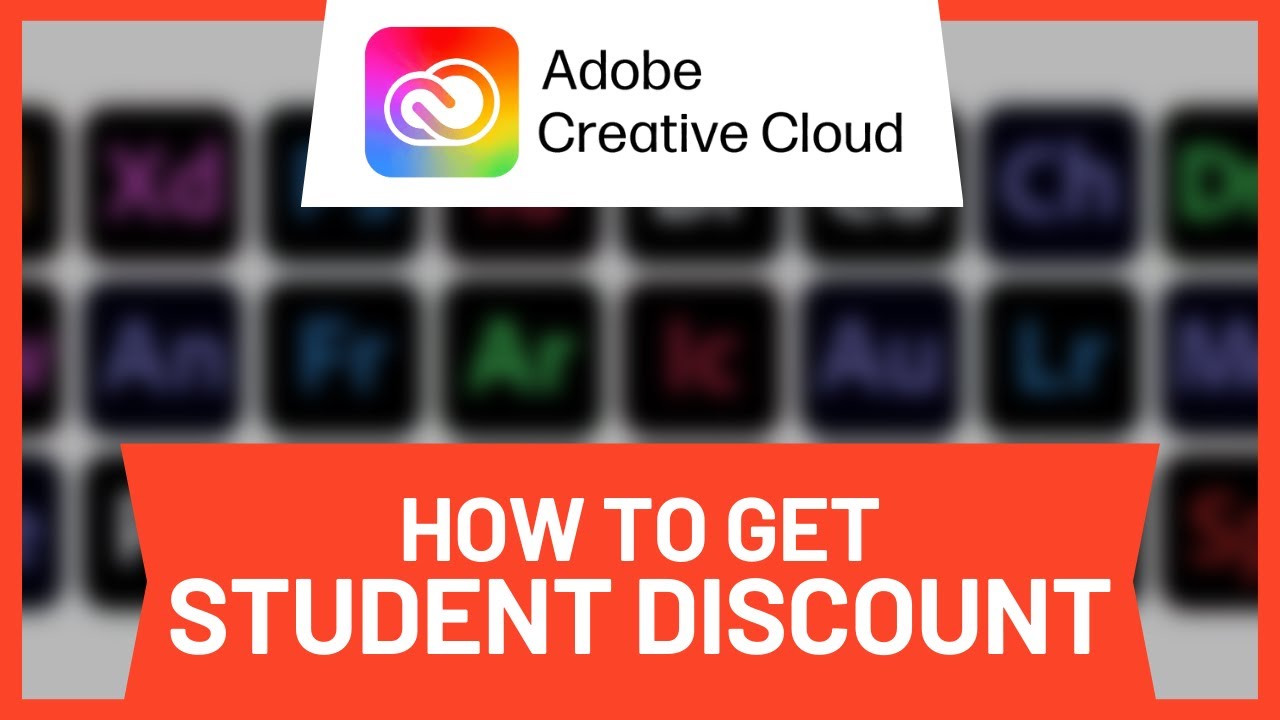 Case Study: Adobe's Creative Cloud Discount
Case Study: Adobe's Creative Cloud Discount- Company: Adobe, Worldwide (ongoing)
- What Was Done: Adobe offered significant discounts on its Creative Cloud services to college students, recognizing the financial constraints many students face. The campaign was promoted through email marketing, social media platforms frequented by students, and partnerships with educational institutions. Adobe aimed to embed its software into students' learning and creative processes early on.
- Results/Impact: This strategy led to a substantial increase in Adobe Creative Cloud subscriptions among college students, with Adobe reporting a 50% year-over-year growth in education sector subscriptions. The discount program not only boosted Adobe's user base but also fostered long-term loyalty among the next generation of digital creatives.
- Create Engaging Content: Develop content that entertains, informs, and engages. Memes, short videos, and interactive posts can capture their attention and encourage sharing.
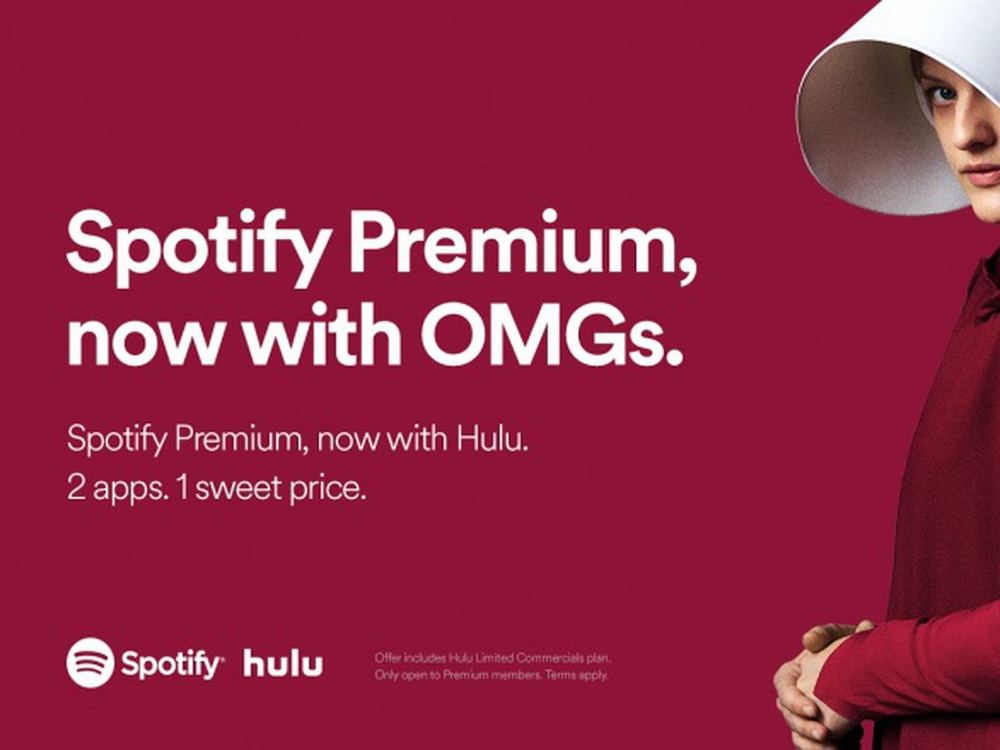 Case Study: Spotify & Hulu's Bundled Subscription Offer
Case Study: Spotify & Hulu's Bundled Subscription Offer- Company: Spotify & Hulu, USA (2018)
- What Was Done: Spotify and Hulu collaborated to offer a bundled subscription package at a discounted rate exclusively for college students. The offer was marketed through targeted online ads, social media campaigns, and on-campus events, highlighting the value proposition of accessing both music and video streaming services at a lower price.
- Results/Impact: The bundled subscription deal significantly increased sign-ups from college students for both platforms, with Spotify reporting a double-digit growth in its student subscription base within the first year of the offer. This collaboration showcased the effectiveness of bundled offers and targeted discounts in attracting price-sensitive college student demographics.
- Use Email Marketing Strategically: While social media is crucial, don’t overlook email marketing. Offer valuable content, discounts, and updates tailored to their interests and needs.
- Mobile Optimization: Ensure all your digital content is optimized for mobile devices, as smartphones are the primary internet access point for many college students.
- Host Contests and Giveaways: Engage students with contests, giveaways, and challenges that encourage participation and brand interaction on social media.
- Personalization: Utilize data analytics to personalize marketing messages and offers, making students feel seen and valued by your brand.
- Campus Ambassadors: Implement a campus ambassador program where students can represent and promote your brand on their campus, leveraging peer-to-peer marketing.
- Feedback and Co-Creation: Invite college students to provide feedback or participate in the creation of new products or services, fostering a sense of ownership and loyalty to your brand.
- Align with Their Values: Clearly communicate how your brand aligns with values important to college students, such as diversity, equality, and innovation.
Marketing to college students is about creating value, facilitating social connection, and aligning with their lifestyle and values. By adopting these strategies, brands can effectively engage this demographic, fostering brand loyalty and advocacy among the college student population.

Marketing to The Affluent
Marketing to the affluent requires a nuanced approach that appreciates their unique preferences, desires for exclusivity, and high expectations for quality and service. This demographic, characterized by high disposable income and discerning tastes, seeks out brands that offer exceptional experiences, craftsmanship, and personalized services.
Here’s how to effectively engage and market to affluent consumers:
- Emphasize Quality and Exclusivity: Highlight the superior quality, craftsmanship, and exclusivity of your products or services. Affluent consumers are willing to pay a premium for items that stand out for their uniqueness and high standards.
 Case Study: Sotheby's International Realty's Luxury Real Estate Content
Case Study: Sotheby's International Realty's Luxury Real Estate Content- Company: Sotheby's International Realty, Worldwide (ongoing)
- What Was Done: Sotheby's International Realty leveraged high-quality, immersive content to market luxury real estate properties to affluent buyers. This included virtual tours, professionally produced videos, and rich storytelling in listings, promoted through targeted digital campaigns and exclusive events. The brand positioned itself as not just selling homes but offering a lifestyle.
- Results/Impact: Sotheby's International Realty reported record sales, with a significant portion attributed to the effectiveness of its content marketing strategy in engaging affluent buyers. The use of immersive content and digital storytelling helped differentiate Sotheby's properties in a competitive market, appealing directly to the desires and expectations of affluent individuals.
- Personalization and Customization: Offer personalized and customizable options that cater to the individual preferences of affluent customers. Personalization enhances the value and exclusivity of the offering.
- Leverage High-End Influencers: Collaborate with influencers and brand ambassadors who resonate with the affluent market. These should be individuals who embody the lifestyle and values of your target demographic.
- Utilize Luxury Publications and Platforms: Advertise and feature your brand in luxury publications, websites, and platforms that affluent consumers trust and frequent.
- Exclusive Events and Experiences: Host exclusive events, private viewings, and VIP experiences that cater to the lifestyle of affluent consumers. These events should reflect the sophistication and exclusivity of your brand.
 Case Study: NetJets' Exclusive Experience Campaign
Case Study: NetJets' Exclusive Experience Campaign- Company: NetJets, Worldwide (2017)
- What Was Done: NetJets marketed its private jet sharing service to affluent individuals through an "exclusive experience" campaign. This included personalized direct mail, high-end event sponsorships, and private showcases of the NetJets service. The campaign emphasized exclusivity, luxury, and unparalleled service, aligning with the lifestyles and expectations of the target demographic.
- Results/Impact: The campaign led to a 20% increase in NetJets memberships among the targeted affluent market segment. NetJets' focus on exclusive and personalized marketing efforts effectively communicated the brand's value proposition to a niche but highly valuable customer base.
- Premium Customer Service: Provide impeccable, personalized customer service that exceeds expectations. Affluent consumers value exceptional service that is attentive, discreet, and responsive.
- Strong Brand Storytelling: Craft compelling brand narratives that emphasize heritage, craftsmanship, and the unique story behind your products or services. Affluent consumers appreciate brands with rich histories and authentic stories.
- Digital Presence and E-commerce: Ensure a seamless, high-quality online experience, from browsing to purchasing. An elegant, user-friendly website and e-commerce platform are essential, even for luxury brands.
- Strategic Partnerships: Form partnerships with other luxury brands and services to offer bundled experiences or cross-promotions that enhance the overall value proposition for affluent consumers.
- Privacy and Security: Maintain the highest standards of privacy and security in all transactions and interactions. Affluent consumers expect their information to be handled with the utmost confidentiality.
- Content Marketing: Produce high-quality, informative content that resonates with the interests and lifestyles of affluent consumers, such as luxury travel, fine dining, and investment opportunities.
- Selective Social Media Engagement: While digital presence is important, choose social media platforms wisely, focusing on those where affluent consumers are more likely to engage, such as LinkedIn and Instagram.
- Data-Driven Insights: Utilize data analytics to understand the preferences and behaviors of affluent consumers better and tailor your marketing strategies accordingly.
Marketing to the affluent isn’t just about showcasing luxury and quality; it’s about creating an exclusive, personalized experience that resonates with their lifestyle and values. By focusing on exceptional service, exclusivity, and a deep understanding of their needs and desires, brands can successfully engage this discerning audience.
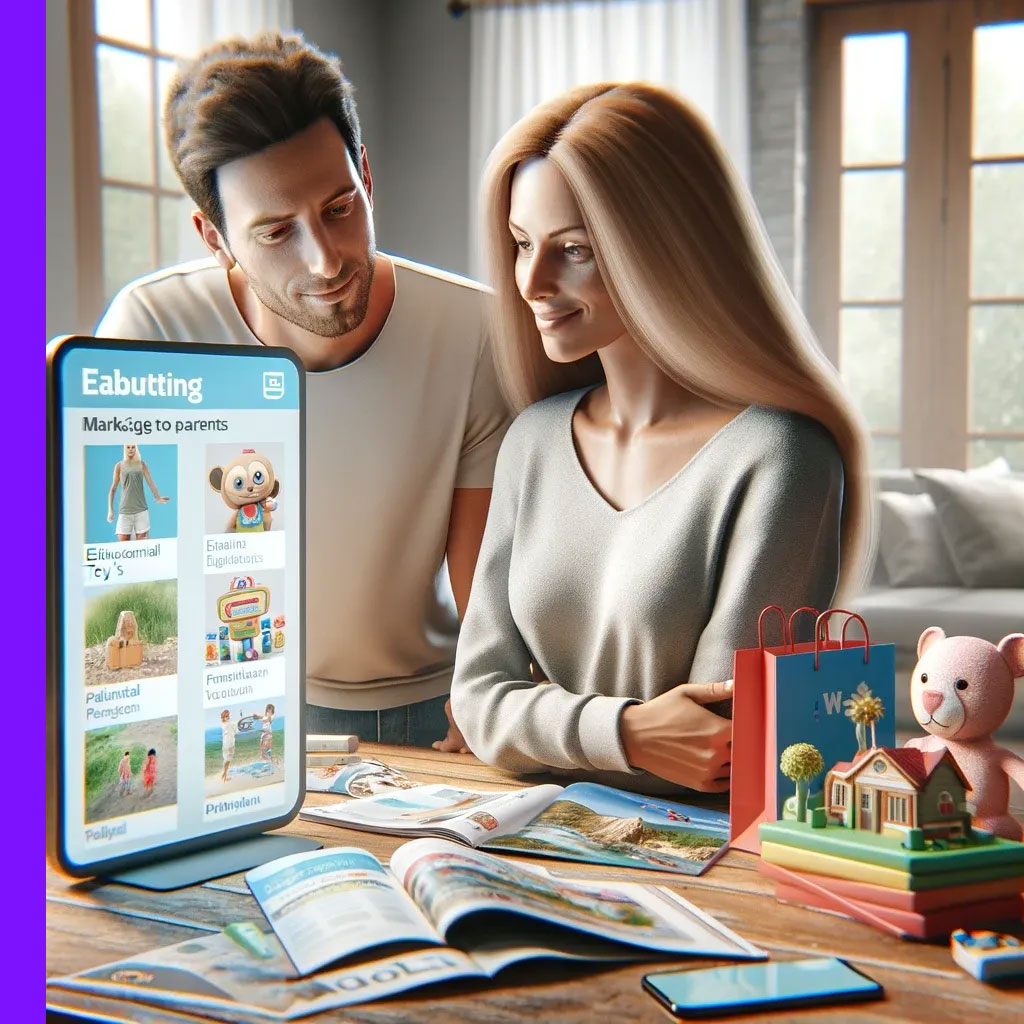
Marketing to Parents
Marketing to parents requires a strategic approach that acknowledges their primary concern: the well-being and happiness of their children. Parents look for products and services that offer quality, safety, convenience, and educational value. Effective marketing to this demographic involves understanding the challenges and joys of parenthood and presenting solutions that resonate with their needs and aspirations.
Here’s how to connect with and market to parents effectively:
- Highlight Safety and Quality: Emphasize the safety, quality, and reliability of your products or services. Parents prioritize these attributes when making purchasing decisions for their families.
- Focus on Educational Value: Showcase the educational benefits of your offerings. Parents are keen on products and services that contribute to their children’s development and learning.
 Case Study: Fisher-Price's Play Lab Insights
Case Study: Fisher-Price's Play Lab Insights- Company: Fisher-Price, USA (ongoing)
- What Was Done: Fisher-Price utilized insights from its in-house Play Lab, where children and parents interact with toys in development, to inform its product design and marketing strategies. This approach allowed Fisher-Price to market directly to parents by highlighting the educational and developmental benefits of their toys through storytelling and relatable content on social media, email newsletters, and packaging.
- Results/Impact: By leveraging real-world insights into how children play and learn, Fisher-Price strengthened its brand connection with parents, leading to a 30% increase in engagement on their parenting-focused content and a significant boost in sales for toys developed with Play Lab insights.
- Convenience is Key: Highlight how your products or services make life easier for busy parents. Solutions that save time, reduce stress, or simplify tasks are highly valued.
- Use Authentic and Relatable Messaging: Craft marketing messages that are genuine and relatable. Use real-life scenarios that parents can identify with, avoiding idealized or unrealistic portrayals of family life.
 Case Study: Hello Bello's Organic Social Strategy
Case Study: Hello Bello's Organic Social Strategy- Company: Hello Bello, USA (2019)
- What Was Done: Co-founded by Kristen Bell and Dax Shepard, Hello Bello made a strong entrance into the market of baby products by focusing on organic and affordable products. The brand utilized organic social media strategies, leveraging the founders’ popularity and authentic engagement with parents through relatable content, parenting tips, and community-driven initiatives.
- Results/Impact: Hello Bello quickly built a strong online community of parents, with social media platforms driving substantial brand awareness and customer loyalty. This approach led to the brand being stocked in major retailers nationwide and experiencing exponential online sales growth, demonstrating the power of authenticity and community in marketing to parents.
- Leverage Social Proof: Include testimonials and reviews from other parents. Recommendations from peers are a powerful influence on parents' purchasing decisions.
- Engage on Social Media: Utilize social media platforms where parents are active, such as Facebook and Instagram. Share useful content, parenting tips, and community stories to engage this audience.
- Offer Support and Resources: Beyond promoting products, provide resources and support that address broader parenting concerns and challenges. Blogs, guides, and forums can foster a supportive community feeling.
- Create Family-Friendly Content: Develop marketing content that appeals to both parents and children, such as interactive games, family challenges, or educational activities.
- Emphasize Value for Money: Parents look for value in their purchases. Highlight the durability, versatility, and long-term benefits of your products.
- Partnerships with Parenting Influencers: Collaborate with parenting influencers and bloggers who can authentically endorse your brand. Their credibility can help build trust with your target audience.
- Highlight Social Responsibility: Show how your brand positively impacts society or the environment. Parents appreciate companies that demonstrate ethical practices and social responsibility.
- Privacy and Security: Assure parents of the privacy and security of any data collected, especially in products or services designed for children.
- Special Offers and Loyalty Programs: Provide special offers, discounts, or loyalty programs tailored to families. This can encourage trial and repeat purchases.
- Inclusive Marketing: Ensure your marketing reflects the diversity of families in terms of composition, culture, and background. Inclusivity resonates with modern parents.
Marketing to parents involves connecting on a level that respects their intelligence, addresses their concerns, and acknowledges the joys and challenges of raising children. By providing real value, convenience, and support, brands can build lasting relationships with this important demographic.

B2C Marketing
B2C (Business-to-Consumer) marketing refers to the strategies and tactics companies use to promote their products and services directly to consumers. The main goal of B2C marketing is to convert shoppers into buyers as efficiently and quickly as possible.
Here's how effective B2C marketing is strategized and executed:
- Understand Consumer Behavior: Deeply research your target market to understand their needs, preferences, and decision-making processes. Consumer behavior analytics provides insights that shape all aspects of marketing strategy.
- Emotional Connection: Create marketing messages that resonate on an emotional level. B2C marketing often leverages feelings and relationships to drive sales.
- Brand Identity: Develop a strong, relatable brand identity. A recognizable and loved brand can have a considerable influence on consumer purchasing decisions.
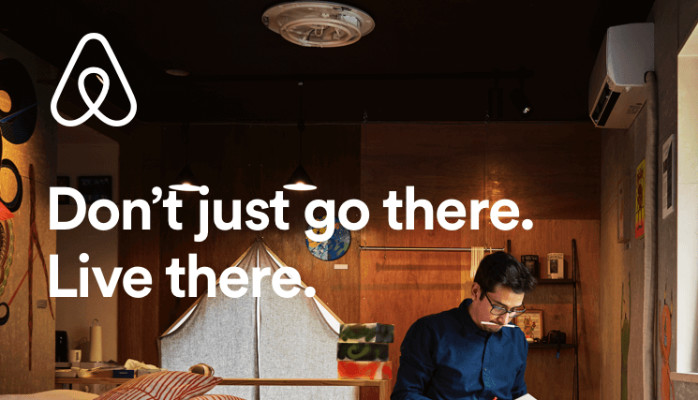 Case Study: Airbnb's "Live There" Campaign
Case Study: Airbnb's "Live There" Campaign- Company: Airbnb, Worldwide (2016)
- What Was Done: Airbnb's "Live There" campaign was launched to differentiate the brand from traditional tourist experiences, encouraging travelers to "live" in the places they visit, just like locals. The campaign utilized targeted social media advertising, personalized email marketing, and storytelling through user-generated content to convey the message.
- Results/Impact: The "Live There" campaign contributed to a 10% increase in bookings among targeted demographics and strengthened Airbnb's positioning as a provider of unique travel experiences. By focusing on the authenticity and personalization of travel, Airbnb effectively engaged with its B2C audience, enhancing brand loyalty and perception.
- Online Presence: Establish a strong online presence with a user-friendly website and active social media profiles. Optimize for mobile users to enhance the shopping experience.
- Content Marketing: Utilize engaging, valuable content to attract and retain an audience. This can include blogs, videos, tutorials, and other forms of content that entertain, educate, or inform.
- SEO and SEM: Invest in search engine optimization and search engine marketing to increase visibility when consumers are actively searching for products or services you offer.
- Social Media Marketing: Engage with consumers where they spend a significant amount of time. Use targeted social media campaigns to build communities around your brand.
- Email Marketing: Personalize communication with your customers through email marketing. Provide offers, news, and tailored content that encourages repeat purchases and loyalty.
- Customer Service: Offer excellent customer service, including after-sales support. Positive customer experiences can lead to repeat business and word-of-mouth referrals.
- Loyalty Programs: Implement programs that reward customer loyalty with discounts, special offers, or exclusive information.
- Influencer Collaborations: Partner with influencers to tap into their follower base and gain credibility through their endorsements.
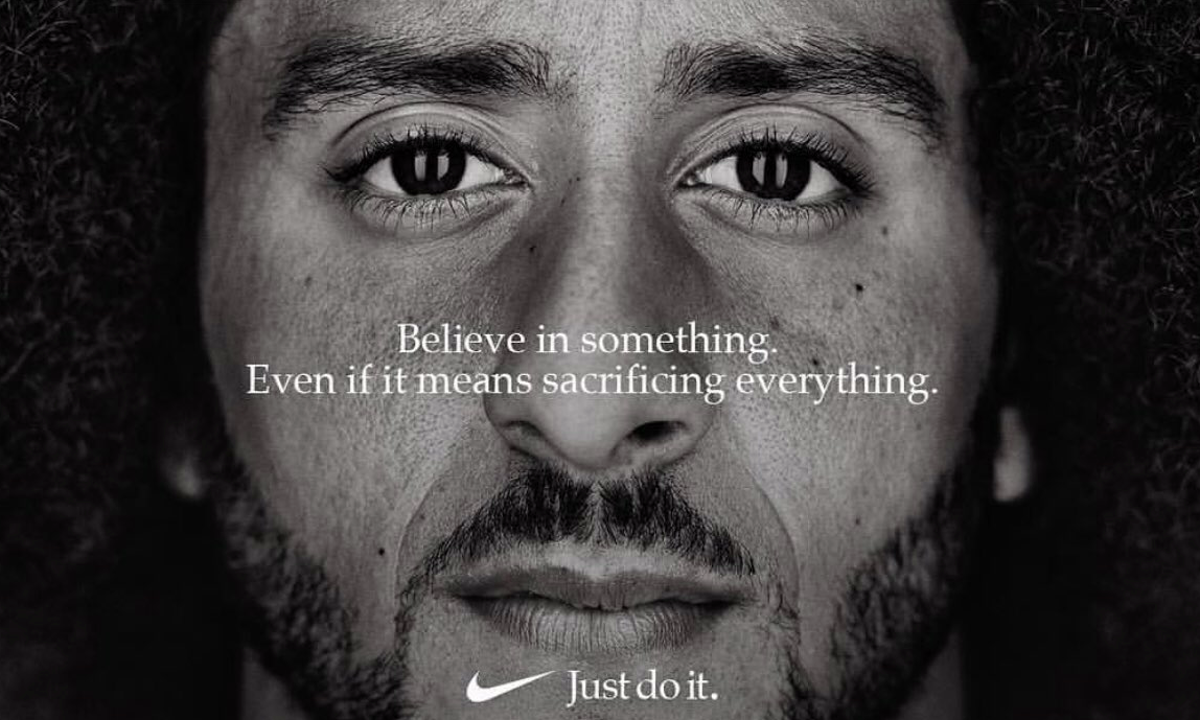 Case Study: Nike's "Just Do It" Campaign Revival
Case Study: Nike's "Just Do It" Campaign Revival- Company: Nike, Worldwide (2018)
- What Was Done: Nike revitalized its iconic "Just Do It" campaign by featuring Colin Kaepernick (an American civil rights activist and former football quarterback) in its advertisements, making a bold statement on social justice and taking a stand on political issues. The campaign was executed across various channels, including social media, television, and outdoor advertising, sparking significant public discussion.
- Results/Impact: Despite initial controversy, Nike's campaign led to a 31% increase in online sales immediately following the ad launch. The campaign solidified Nike's brand identity and appeal among younger, socially conscious consumers, demonstrating the impact of values-based marketing in a B2C context.
- User-Generated Content: Encourage and share user-generated content to enhance authenticity and trust in your brand.
 Case Study: Peloton's Community-Driven Approach
Case Study: Peloton's Community-Driven Approach- Company: Peloton, Worldwide (ongoing)
- What Was Done: Peloton marketed its exercise equipment and subscription service by creating a sense of community among its users. This was achieved through live-streamed and on-demand classes that allowed users to compete and interact with each other and their instructors. Peloton's marketing strategy focused on the convenience of home workouts and the motivational aspect of being part of a fitness community.
- Results/Impact: Peloton saw a surge in sales, particularly during the COVID-19 pandemic, with a reported revenue increase of 172% in 2020. The company's success highlights the power of creating a community and leveraging digital content to enhance the customer experience in B2C marketing.
- Paid Advertising: Utilize PPC, display ads, and retargeting strategies to drive traffic and conversions.
- Data-Driven Decisions: Rely on data analytics to inform your marketing decisions, ensuring that you are meeting the needs of your consumers and investing in the most effective strategies.
In B2C marketing, it's essential to create a seamless buying experience across all channels, whether online or in-store. Effective B2C marketing speaks to the consumer's desires, needs, and pain points, offering solutions in a way that's both compelling and convenient for them.

B2B Marketing
B2B (Business-to-Business) marketing is the practice of selling products or services directly to other businesses. Unlike B2C marketing, which often focuses on quick sales, B2B marketing typically involves longer sales cycles and requires building strong relationships and demonstrating value.
Here’s how to approach B2B marketing effectively:
- Understand Your Audience: Identify and understand the decision-makers within the businesses you're targeting. Recognize their pain points, challenges, and the specific value they seek.
- Value Proposition: Craft a clear, relevant and strong value proposition that articulates why your product or service is the best solution for your B2B customers' needs.
- Content Marketing: Develop high-quality, informative content that addresses the specific questions and needs of your B2B audience, such as whitepapers, case studies, and industry reports.
- Lead Generation: Utilize various channels such as LinkedIn, industry events, and email campaigns to generate leads, then nurture those leads with targeted follow-ups.
- Educational Marketing: Provide webinars, workshops, and training sessions that can help potential clients understand the complexities of your offerings and the industry at large.
 Case Study: HubSpot's Inbound Marketing Methodology
Case Study: HubSpot's Inbound Marketing Methodology- Company: HubSpot, Worldwide (ongoing)
- What Was Done: HubSpot championed the inbound marketing methodology, providing valuable content and tools that attract customers naturally. They utilized their own platform to create blogs, eBooks, webinars, and free tools aimed at solving common problems faced by their target B2B audience. This content-first approach was complemented by robust SEO, email marketing, and social media strategies.
- Results/Impact: HubSpot's inbound marketing efforts significantly increased their lead generation and customer acquisition, with the company reporting a revenue growth from $255 million in 2017 to over $1 billion by 2021. Their success underscores the power of providing value and education in attracting and retaining B2B customers.
- Account-Based Marketing (ABM): Tailor marketing efforts to individual prospect companies, creating personalized campaigns that resonate with the unique context of each business.
- SEO and SEM: Optimize your online presence so that potential B2B clients can find you through search engines when seeking solutions you offer.
- Networking and Relationships: Foster long-term relationships through networking, as partnerships and trust are crucial in B2B transactions.
- Trade Shows and Conferences: Participate in industry events to showcase your offerings, gain visibility, and engage directly with potential clients.
- Referral Programs: Encourage existing clients to refer new clients by creating a structured referral program with incentives.
- Customer Testimonials and Case Studies: Use success stories to showcase how your product or service has helped other businesses.
 Case Study: Slack's "Where Work Happens" Campaign
Case Study: Slack's "Where Work Happens" Campaign- Company: Slack, Worldwide (2016)
- What Was Done: Slack launched the "Where Work Happens" campaign to solidify its position as a leading communication platform for businesses. The campaign focused on showcasing real-world use cases of Slack through testimonials from diverse companies. It was promoted via digital ads, social media, and content marketing, including case studies and collaborative webinars with existing customers.
- Results/Impact: This strategic focus on real user experiences and versatile application across industries led to a significant increase in B2B engagements. Slack reported a 50% growth in paid teams year-over-year following the campaign, highlighting the effectiveness of customer-centric storytelling in B2B marketing.
- Influencer and Thought Leadership: Establish your company leaders as experts in your industry through speaking engagements, publishing insightful articles, and active participation in industry discussions.
- Data-Driven Marketing: Analyze data and metrics to understand what strategies work best, where to allocate resources, and how to tailor your approach to meet the needs of your B2B clients.
- CRM Systems: Implement customer relationship management (CRM) systems to manage leads, customer information, and interactions, ensuring all touchpoints are recorded and utilized effectively.
In B2B marketing, the focus is on building professional relationships, demonstrating in-depth knowledge of your industry, and clearly communicating how your products or services can improve a business's operations or bottom line. It's a strategic approach that prioritizes personalized engagement and solution-based selling.

B2B2C Marketing
B2B2C (Business-to-Business-to-Consumer) marketing involves strategies where a business sells its products or services to another business, and these offerings are then sold to the end consumers. This model blends the B2B and B2C approaches, requiring a deep understanding of both the partnering business's needs and the final consumer's preferences.
Here’s an effective strategy for B2B2C marketing:
- Partner Alignment: Ensure that your business goals, brand messaging, and values align with those of your B2B partners to present a unified front to consumers.
- Product/Service Adaptability: Tailor your products or services to meet the needs of both your business partners and their customers, ensuring that they can be easily integrated and sold through the partner's channels.
 Case Study: Shopify Plus for High-Volume Merchants
Case Study: Shopify Plus for High-Volume Merchants- Company: Shopify, Worldwide (ongoing)
- What Was Done: Shopify Plus was launched to cater to high-volume merchants and brands, offering an enterprise-level e-commerce platform. Shopify marketed this service to businesses (B2B) with the promise of empowering them to provide exceptional online shopping experiences to their end customers (B2C). Marketing efforts included targeted digital ads, success stories from well-known brands, and strategic partnerships.
- Results/Impact: Shopify Plus attracted a significant number of large brands and retailers, contributing to Shopify's overall growth. By the end of 2020, Shopify reported that Shopify Plus merchants had grown to contribute a substantial portion of the platform's monthly recurring revenue, showcasing the effectiveness of a B2B2C approach in scaling business solutions.
- Dual-Focused Marketing Efforts: Develop marketing campaigns that address both the business partner's objectives and the end consumer's desires, demonstrating how your offerings add value at each stage of the supply chain.
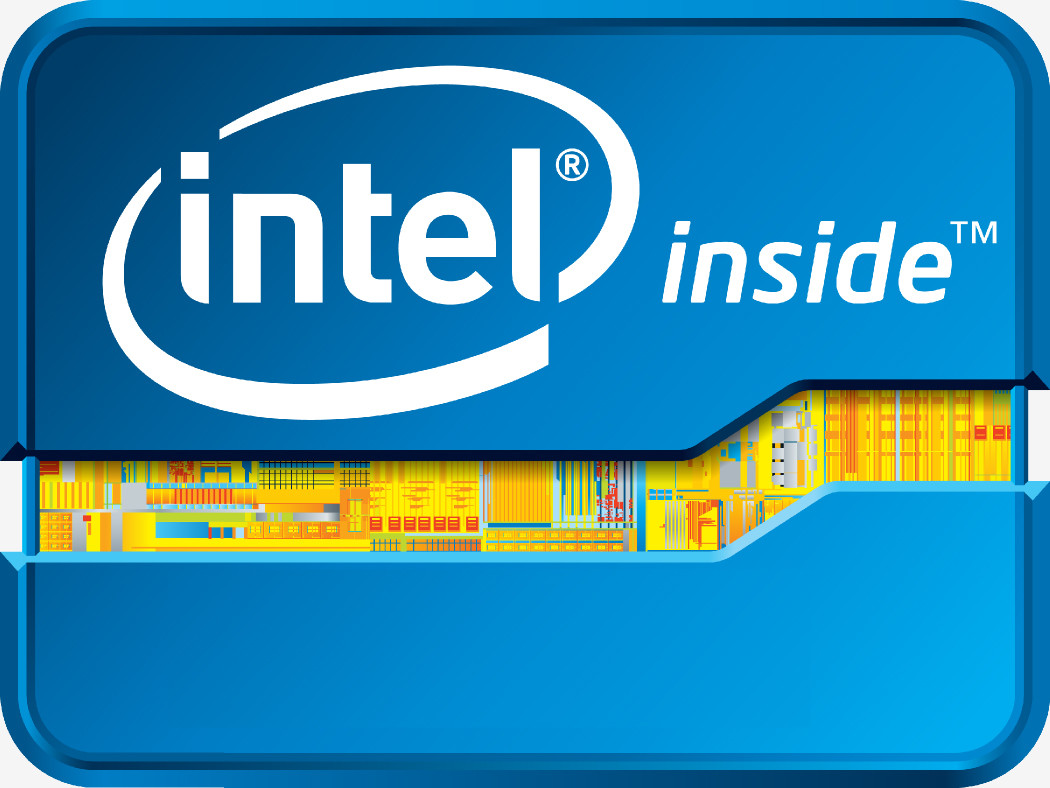 Case Study: Intel's "Intel Inside" Campaign
Case Study: Intel's "Intel Inside" Campaign- Company: Intel, Worldwide (1991)
- What Was Done: Intel launched the "Intel Inside" campaign to market its microprocessors not only to computer manufacturers (B2B) but also directly to consumers (B2C). The campaign included co-marketing funds for manufacturers who branded their products with the Intel logo and ran Intel-focused ads. This dual-focus strategy was promoted through TV commercials, print ads, and later, digital channels.
- Results/Impact: The "Intel Inside" campaign dramatically increased consumer awareness of Intel's brand, contributing to a significant market share growth in the PC market. It became a textbook example of successful B2B2C marketing, demonstrating the value of brand power in the supply chain.
- Customer Insights: Leverage data and insights from both your B2B partners and direct consumer feedback to refine your offerings and marketing tactics.
- Channel Optimization: Utilize the sales and distribution channels of your B2B partners effectively while also exploring direct-to-consumer channels where appropriate to boost brand visibility and accessibility.
- Co-Branding Initiatives: Engage in co-branding efforts with your B2B partners for promotions, advertisements, and product launches to leverage the strengths of both brands.
- Communication and Training: Provide your B2B partners with the necessary product knowledge and marketing materials to enable them to sell to the end consumer effectively.
- Customer Journey Mapping: Understand and map out the customer journey from the initial B2B interaction to the final consumer purchase, optimizing touchpoints for a seamless experience.
- Feedback Loops: Establish feedback mechanisms to gather insights from end consumers through your B2B partners, using this information to improve products, services, and marketing strategies.
- Support for Sales: Offer robust support to your B2B partners' sales teams, including training, sales enablement tools, and shared analytics, to ensure they can effectively market and sell your product to the consumer.
In the B2B2C model, the marketing strategy must effectively cater to the needs and goals of both businesses and consumers, often requiring customized marketing efforts for different segments of the target audience. Success in this approach hinges on the ability to collaborate closely with B2B partners while maintaining a keen understanding of the ultimate consumer's needs and behaviors.

B2G Marketing
B2G (Business-to-Government) marketing involves selling products or services to government agencies and entities. It is a specialized field that requires a deep understanding of public sector procurement processes, compliance, and often lengthy decision-making cycles.
Here’s a strategic approach for effective B2G marketing:
- Compliance and Regulations: Ensure your marketing efforts adhere to the specific regulations and compliance standards required in government procurement.
- RFP Awareness: Stay informed about Requests for Proposals (RFPs), which are formal solicitations for vendors, and respond with detailed proposals that match the government's requirements.
- Relationship Building: Establish and maintain relationships with key government decision-makers and influencers, as contracts are often awarded based on trust and proven capability.
- Educational Content: Create content that educates government buyers about your products or services, focusing on the benefits and cost-effectiveness, as well as compliance with government standards.
 Case Study: Lockheed Martin's F-35 Program
Case Study: Lockheed Martin's F-35 Program- Company: Lockheed Martin, Worldwide (ongoing)
- What Was Done: Lockheed Martin undertook extensive marketing efforts for its F-35 Lightning II program, targeting government and military officials across the globe. This included detailed presentations on the aircraft's capabilities, lobbying efforts, participation in international air shows, and the use of virtual reality simulations to demonstrate the F-35's advanced technology.
- Results/Impact: These marketing efforts have been instrumental in securing contracts with various governments for the F-35 program, making it one of the largest and most lucrative defense contracts in history. The success of the program highlights the importance of tailored, high-engagement marketing strategies in the B2G sector.
- Case Studies and Testimonials: Use case studies and testimonials from previous government projects to demonstrate experience and effectiveness in the public sector.
 Case Study: Palantir's Government Data Analytics Solutions
Case Study: Palantir's Government Data Analytics Solutions- Company: Palantir Technologies, USA (ongoing)
- What Was Done: Palantir Technologies focused its marketing efforts on showcasing its data analytics platforms, Palantir Gotham and Palantir Foundry, to government agencies. Their approach included detailed case studies, demonstrations of the software's capabilities in addressing national security and public sector challenges, and strategic partnerships with government contractors.
- Results/Impact: Palantir's targeted marketing strategies led to significant contracts with the U.S. government, including defense, intelligence, and public health agencies. These contracts have not only contributed to Palantir's revenue growth but also established the company as a key provider of data analytics solutions in the government sector.
- Government-focused SEO: Optimize your online content with keywords relevant to government procurement to increase visibility in searches performed by government agencies.
- Trade Shows and Conferences: Attend government-focused trade shows and conferences to network, showcase your offerings, and learn about new government projects and needs.
- Strategic Partnerships: Form partnerships with other businesses that have established government relationships to expand your reach within the sector.
- Tailored Advertising: If permissible, use targeted advertising in publications and platforms frequented by government procurement officials.
- Lobbying and Advocacy: Engage in lobbying efforts, where legal, to advocate for policies that could lead to demand for your products or services.
- Government-Specific PR: Utilize public relations to increase visibility in the government sector, including press releases and stories about your work with public agencies.
- Dedicated Government Sales Team: Employ a sales team specialized in government relations and sales, who understand the nuances of government contracts and can navigate the complex sales process.
- Contract Vehicles: Utilize government contract vehicles, like GSA Schedules in the United States, which simplify the government procurement process for certain products and services.
B2G marketing requires patience, persistence, and a strategic approach tailored to the unique environment of government contracting. Building a strong reputation for reliability, compliance, and quality is crucial in securing and maintaining government contracts.

D2C Marketing
D2C (Direct-to-Consumer) marketing is a strategy where manufacturers or producers sell directly to consumers, bypassing traditional middlemen like retailers, wholesalers, or distributors. This approach allows for greater control over brand messaging, customer relationships, and overall marketing strategy.
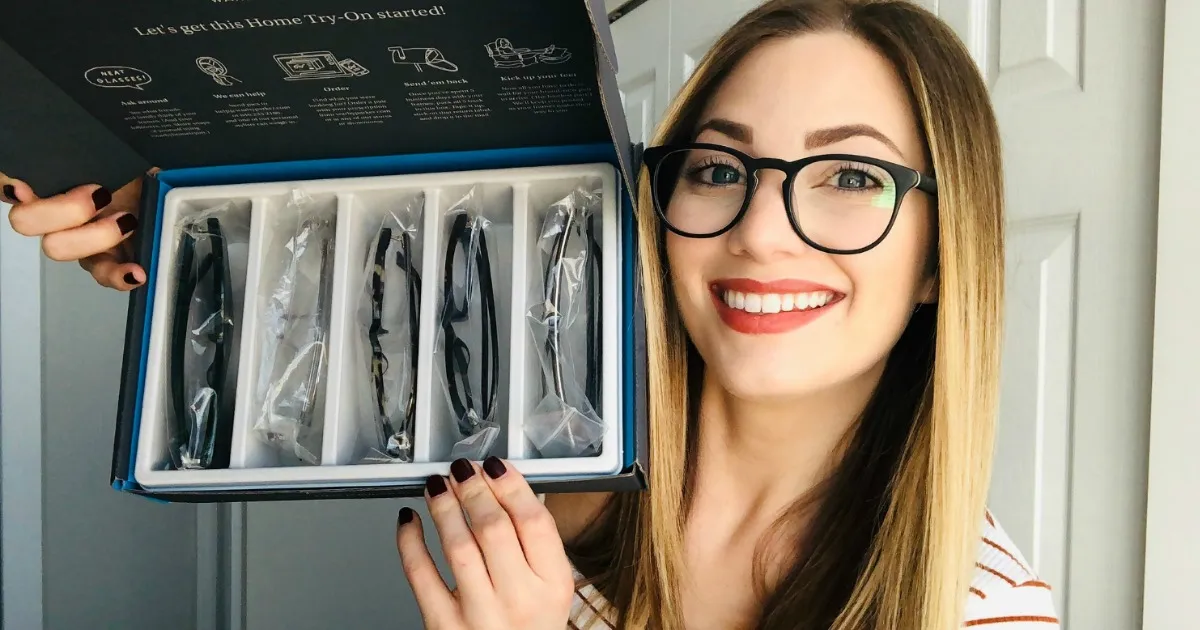 Case Study: Warby Parker's Online Eyewear Revolution
Case Study: Warby Parker's Online Eyewear Revolution
- Company: Warby Parker, USA (ongoing)
- What Was Done: Warby Parker disrupted the eyewear industry with its Direct-to-Consumer (D2C) model, bypassing traditional retail channels to offer stylish, affordable eyeglasses online. The brand's marketing strategy focused on social media engagement, influencer partnerships, and a home try-on program that allowed customers to test frames before purchasing.
- Results/Impact: This D2C approach, coupled with effective online marketing, propelled Warby Parker to significant growth, with the company valued at over $3 billion. Their success demonstrates the potential of D2C models to challenge traditional industries and reshape consumer purchasing habits.
Here’s how businesses can effectively execute D2C marketing:
- E-commerce Platform: Develop a robust e-commerce website or platform that provides a seamless shopping experience, complete with product information, customer reviews, and secure payment options.
- Brand Storytelling: Utilize your platforms to tell your brand’s story directly to consumers, building a strong brand identity and emotional connection with your audience.
- Customer Data Collection: Leverage direct interactions to collect and analyze customer data, enabling personalized marketing efforts and product development insights.
- Content Marketing: Create engaging content such as blogs, videos, and social media posts that educate, entertain, and engage your target audience, driving brand loyalty.
- Email Marketing: Implement targeted email campaigns that nurture customer relationships with updates, exclusive offers, and personalized recommendations.
- Social Media Engagement: Engage with customers on social media platforms, using these channels for customer service, community building, and targeted advertising.
- Influencer Collaborations: Partner with influencers whose followers align with your target market to extend your reach and lend credibility to your products.
- Customer Reviews and Testimonials: Encourage and highlight customer reviews and testimonials to build trust and provide social proof.
- SEO and SEM: Optimize your online content for search engines to improve visibility and use search engine marketing to attract traffic to your direct sales channels.
- Subscription Services: Offer subscription models or membership programs that provide convenience for customers and consistent revenue for your business.
- Customer Service Excellence: Provide exceptional customer service to create positive experiences, encourage repeat business, and generate word-of-mouth referrals.
 Case Study: Casper's Sleep Economy Innovation
Case Study: Casper's Sleep Economy Innovation- Company: Casper, USA (2014)
- What Was Done: Casper launched as a D2C mattress startup with a focus on simplifying the mattress buying process. Their marketing strategy highlighted the convenience of online shopping, free delivery, and a 100-night trial. Casper utilized content marketing, digital ads, and influencer partnerships to educate consumers on the importance of sleep and differentiate their products.
- Results/Impact: Casper quickly became a leader in the online mattress industry, reporting over $400 million in revenue by 2018. The brand's focus on customer experience and education through its marketing efforts established a new standard in the D2C space, emphasizing the importance of adding value beyond the product.
- Loyalty Programs: Develop loyalty programs that reward repeat purchases and foster long-term customer relationships.
- Product Launches and Exclusives: Utilize the D2C model to offer exclusive products or early access to new releases, creating a sense of exclusivity and urgency.
D2C marketing empowers businesses to take full control of the customer journey, from discovery and purchase to post-sales support, allowing for a more tailored and branded customer experience. This direct interaction with consumers can lead to stronger brand loyalty and valuable customer insights, driving long-term business growth.

C2B Marketing
C2B (Consumer-to-Business) marketing reverses the traditional business-to-consumer model. In C2B, consumers create value and businesses consume that value. This could mean individuals offer products or services to businesses, set their own prices, or contribute to a business's marketing efforts.
Here's a strategy, for businesses and platform owners, to effectively approach C2B marketing:
- Leverage Consumer-Generated Content: Encourage consumers to share their content or reviews that can be utilized in marketing campaigns, enhancing authenticity and trust.
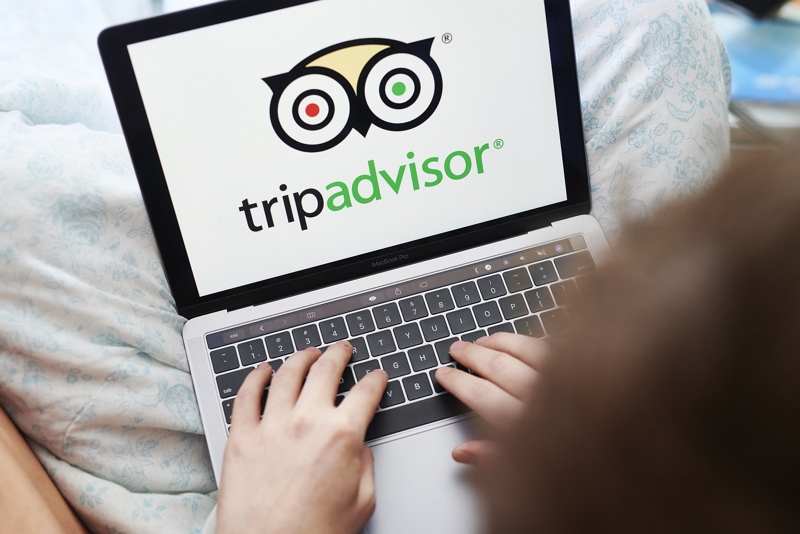 Case Study: TripAdvisor's User-Generated Content Strategy
Case Study: TripAdvisor's User-Generated Content Strategy- Company: TripAdvisor, Worldwide (ongoing)
- What Was Done: TripAdvisor revolutionized travel planning by leveraging a Consumer-to-Business (C2B) model, inviting users to review hotels, restaurants, and attractions. The platform marketed itself as the go-to destination for authentic travel advice, emphasizing user-generated content in its promotional efforts. TripAdvisor engaged with its community through social media, email newsletters highlighting top reviews, and rewards for active contributors.
- Results/Impact: This strategy turned TripAdvisor into one of the world's largest travel platforms, with millions of reviews influencing the choices of travelers globally. By 2019, TripAdvisor reported having over 460 million monthly users, demonstrating the power of C2B marketing in building a trusted brand based on consumer contributions.
- Crowdsourcing for Ideas: Use crowdsourcing platforms where consumers can submit ideas or solutions that businesses can implement or sell.
- Affiliate Marketing: Enable consumers to promote your products or services and receive compensation based on performance, essentially making consumers part of your sales force.
- Consumer-Driven Platforms: Create platforms where consumers can list their services or products, allowing businesses to purchase or contract them directly.
- Online Marketplaces: Utilize online marketplaces where consumers offer their expertise or products, and businesses can bid or purchase them based on their needs.
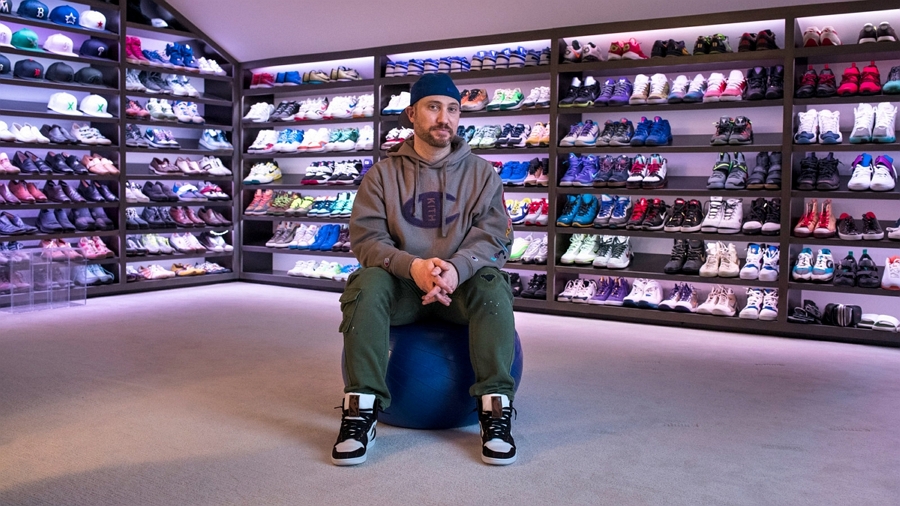 Case Study: StockX's Marketplace for Sneakerheads
Case Study: StockX's Marketplace for Sneakerheads- Company: StockX, USA (ongoing)
- What Was Done: StockX embraced a C2B model by creating a marketplace where consumers set the market price for high-demand sneakers. The platform marketed itself as an authentic and transparent place to buy and sell sneakers, leveraging social media influencers and collaborations with brands for exclusive releases. Their approach highlighted the power of consumer-driven transactions and real-time market data.
- Results/Impact: StockX rapidly grew to become a central hub for sneaker enthusiasts, with a reported $1 billion in gross merchandise value traded on the platform in 2019. The success of StockX showcases the effectiveness of leveraging consumer passion and market dynamics in a C2B marketing strategy.
- Feedback and Surveys: Actively seek consumer feedback and surveys to guide business decisions, product development, and market strategies.
- Supply-Based Pricing: Enable consumers, acting as suppliers, to set their prices for their goods or services, with businesses then responding to these offerings if they meet their requirements and standards.
- Product Reviews and Testing: Invite businesses to review or test products and services, using their insights for offering improvements and marketing.
In C2B marketing, consumers are active participants who can directly influence and shape offerings, pricing, and marketing strategies. This model recognizes the power of the consumer and leverages it to drive business innovation and growth.
Marketing Strategy and Consulting
Interested in getting help with your marketing efforts and marketing strategy?
Contact us: info@zooz.co.il ,+972-9-958-5085
Marketing Articles
- Marketing Overview
- Marketing Goals
- Marketing Metrics
- Marketing Types
- Marketing Channels
- Demographic Marketing
- Marketing Business Models
- Industry-Specific Marketing
- Professional Services Marketing
- Marketing Strategy
- Market Research
- Marketing Communications (MarCom)
- Marketing Execution
- Makreting Careers
- Marketing Education
- Marketing Glossary (200 terms)
- Marketing Versus Other Disciplines
- Marketing Agencies and Outsourcing





